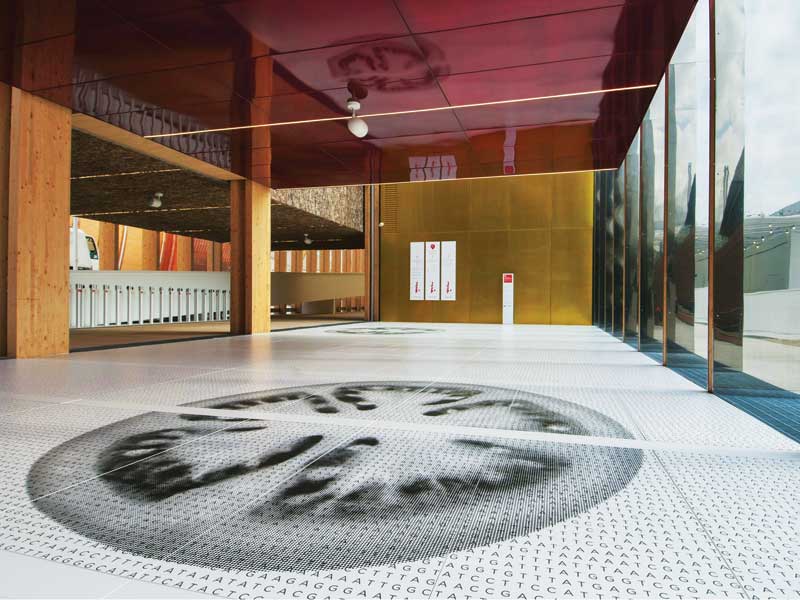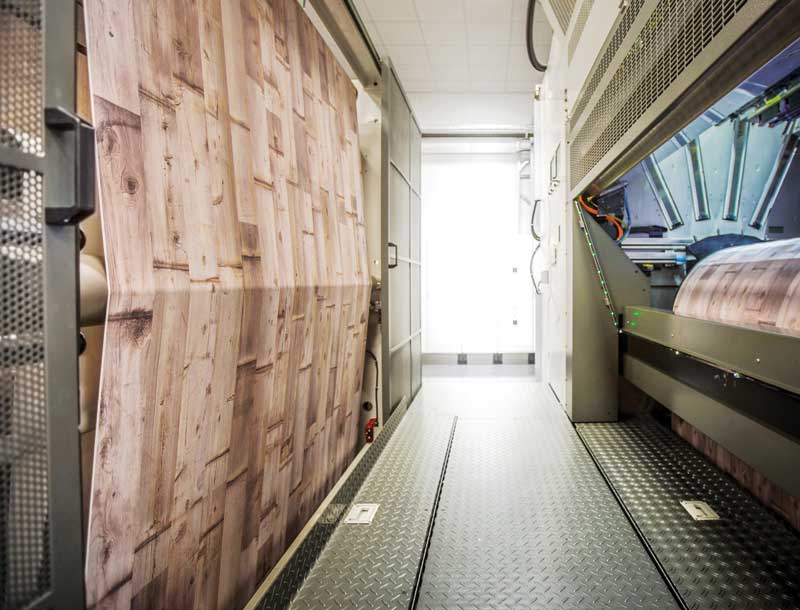By Peter Saunders
The growing popularity of inkjet printing for textiles and ceramic tiles has been well-documented, but other interior decor applications are also now being handled digitally, including wood laminate flooring, ‘luxury’ vinyl tiles (LVTs) and wallcoverings. As inkjet printers change the decorative surfaces industry in the years to come, there will be both challenges and opportunities for sign shops.
“Decoration is a significant part of any industrial process, but particularly important when a product has to perform both a functional and an esthetic role,” says Marcus Timson, co-founder of the Industrial Print Show (InPrint), which recently conducted an industry survey in partnership with digital printing consultancy IT Strategies, decorative surfaces conference organizer TCM Conference Management and inkjet conference organizer IMI Europe. “We were seeing a growing consumer demand for mass customized products within the decor market, so we felt it was important to create a survey to investigate the rate of adoption further.”
The survey was conducted in July and August of 2016, with more than 100 participants within the decor production industry responding from around the world. The results suggest industrial printing is in a growth phase, with a market that is bullish about the potential for further inkjet printing of decor. As demand grows from the consumer market for shorter runs, more flexible production and customized finishing, industrial decor suppliers will be motivated to integrate inkjet technology to stay competitive. And an increasing importance is being placed on the esthetic and haptic (tactile) value of surface design.
Among the décor segments with the most potential for inkjet technology, 74 per cent of survey respondents cited wall surface applications, including wallpaper and images on glass, plastics and other materials, and 54 per cent highlighted flooring, including wood laminate and LVTs.
That said, even though single-pass inkjet systems have already virtually replaced their analogue predecessors in the ceramics sector, 75 per cent of respondents suggested digital technology will not replace analogue processes in the wider decor market, but rather add its own value and create new possibilities by performing roles and filling niches analogue cannot. Indeed, the survey found there is still a long way to go in convincing a traditional decor market that is heavily invested in analogue production to embrace inkjet systems.

These floor graphics were printed on Dekton, which blends glass, porcelain and quartz.
Photo courtesy Gruppo Cosentino
Potential market growth
InPrint’s post-survey report suggests the rise of decor printing is linked to economic growth, the buoyancy of the global construction industry and demand for customized products. It is positioned to play a more significant role in the future, despite current problems that may be restricting adoption.
As mentioned, there appears to be strong potential for the inkjet printing of floorcoverings, moving on from its foundation with ceramic tiles to LVTs and wood laminate. Mark Hanley, president of IT Strategies, estimates the wholesale value of the global flooring market reached $240 billion U.S. in 2014, representing some 16 billion m2 (176 billion sf) of output. He points in particular to the Asia-Pacific (APAC) region, where new building construction and economic development, especially in China and India, are creating substantial demand for newly produced flooring.
“APAC markets accounted for 45 per cent of global demand in 2014 and will continue to represent more than 40 per cent as industrialization and rising incomes allow consumers to renovate,” says Hanley.
He also predicts the lower prices of LVTs and luxury vinyl planks (LVPs), compared to ceramic tiles, will begin to steal market share.






